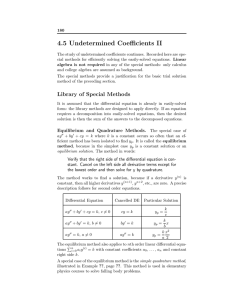Math 211 Fall 2007: Solutions: HW #5
advertisement
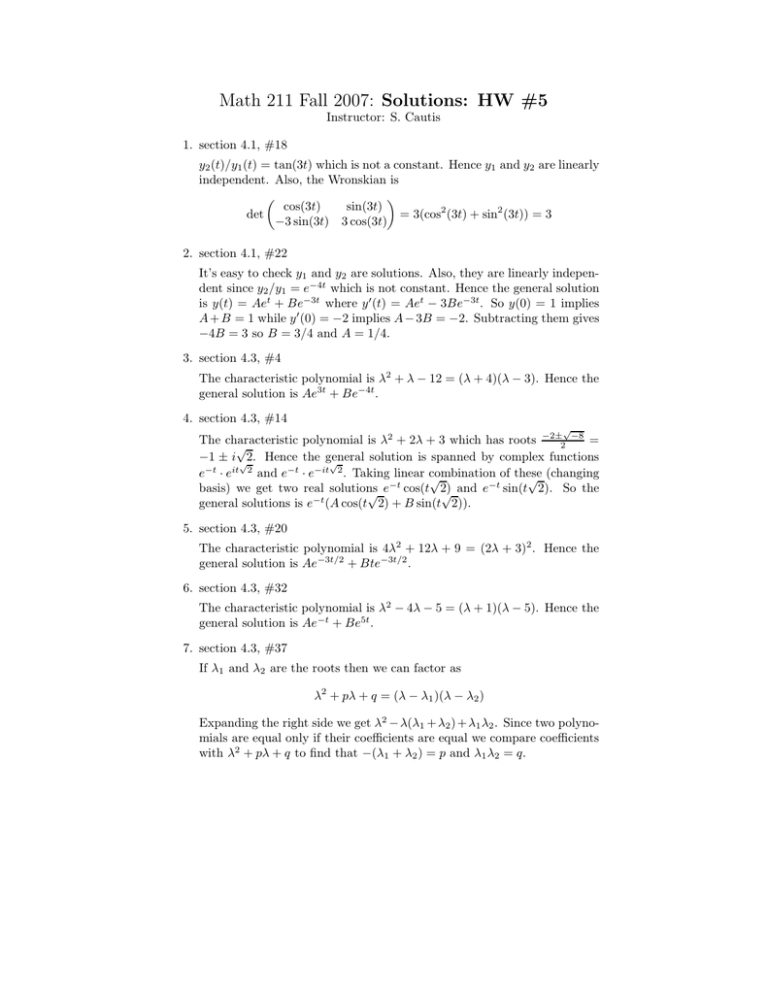
Math 211 Fall 2007: Solutions: HW #5 Instructor: S. Cautis 1. section 4.1, #18 y2 (t)/y1 (t) = tan(3t) which is not a constant. Hence y1 and y2 are linearly independent. Also, the Wronskian is cos(3t) sin(3t) det = 3(cos2 (3t) + sin2 (3t)) = 3 −3 sin(3t) 3 cos(3t) 2. section 4.1, #22 It’s easy to check y1 and y2 are solutions. Also, they are linearly independent since y2 /y1 = e−4t which is not constant. Hence the general solution is y(t) = Aet + Be−3t where y ′ (t) = Aet − 3Be−3t . So y(0) = 1 implies A + B = 1 while y ′ (0) = −2 implies A − 3B = −2. Subtracting them gives −4B = 3 so B = 3/4 and A = 1/4. 3. section 4.3, #4 The characteristic polynomial is λ2 + λ − 12 = (λ + 4)(λ − 3). Hence the general solution is Ae3t + Be−4t . 4. section 4.3, #14 √ The characteristic polynomial is λ2 + 2λ + 3 which has roots −2±2 −8 = √ solution is spanned by complex functions −1 ± i √2. Hence the general √ −t −it 2 −t it 2 and e · e . Taking linear combination of these e ·e √ √ (changing −t −t 2). So the basis) we get two real solutions e cos(t 2) and e sin(t √ √ general solutions is e−t (A cos(t 2) + B sin(t 2)). 5. section 4.3, #20 The characteristic polynomial is 4λ2 + 12λ + 9 = (2λ + 3)2 . Hence the general solution is Ae−3t/2 + Bte−3t/2 . 6. section 4.3, #32 The characteristic polynomial is λ2 − 4λ − 5 = (λ + 1)(λ − 5). Hence the general solution is Ae−t + Be5t . 7. section 4.3, #37 If λ1 and λ2 are the roots then we can factor as λ2 + pλ + q = (λ − λ1 )(λ − λ2 ) Expanding the right side we get λ2 − λ(λ1 + λ2 ) + λ1 λ2 . Since two polynomials are equal only if their coefficients are equal we compare coefficients with λ2 + pλ + q to find that −(λ1 + λ2 ) = p and λ1 λ2 = q. 8. section 4.4,#8 √ √ The amplitude is A = a2 + b2 = 3e−2t/4 + e−2t/4 = 2e−t/4 . Also the fundamental frequency is ω = 4 while the phase φ satisfies √ tan(φ) = b/a = −1/ 3 which means φ = −π/6 (−30 degrees). Hence y takes the form y = 2e−t/4 cos(4t + π/6) Its graphs oscilates and decays to zero as t → ∞. On the other hand, the graphs of ±2e−t/4 don’t osciallate and just tend directly to zero as t → ∞ while passing through (t, y) = (0, ±2).
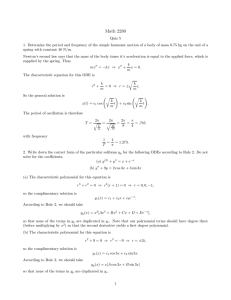



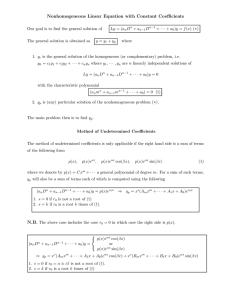


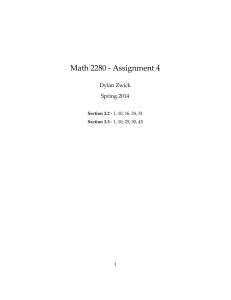
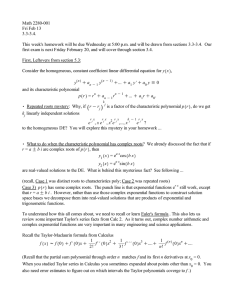
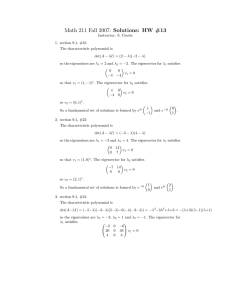
![2013] 1 Homogeneous Equations with Constant Coefficients](http://s2.studylib.net/store/data/011890661_1-d0aee8bebb75070aff94fabc9546abe6-300x300.png)
